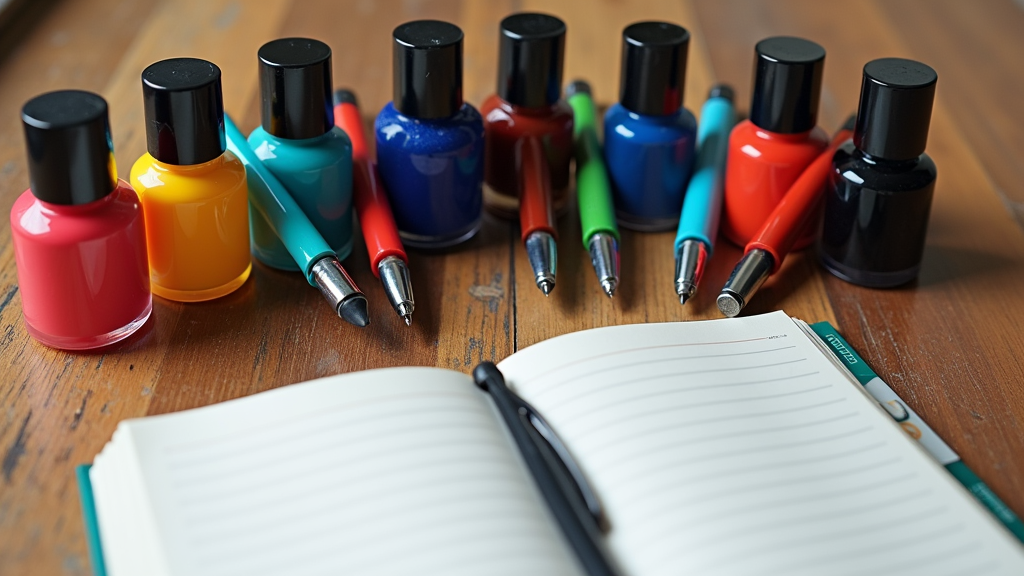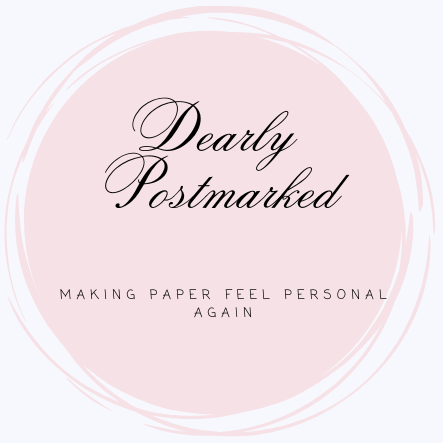If you thought fountain pens were a relic of the past, think again. Even while gadgets, tablets, and cloud syncing apps take center stage, old school fountain pens are popping up online and offline, with a surprising number of people itching to get their hands on one. The comeback is more than just about nostalgia. It’s about feeling what you write and reclaiming a bit of analog calm in a screen filled world.

Heads up! This post may contain Amazon affiliate links. That means if you click and make a purchase, I may earn a small commission—at no extra cost to you. I only recommend products I truly love or think you’ll find useful.
Why Fountain Pens Are Getting Popular Again
Digital lives are busy, and I find that taking a moment to jot a quick note or write a letter by hand feels almost luxurious. For a lot of people, the appeal of fountain pens boils down to the experience. You simply get a smoother, more fluid writing session. Every line feels intentional. That’s something ballpoints or keyboards just don’t give.
Beyond the feel, there’s the reliability factor. Vintage pens can last decades when cared for, and modern ones are built with easy maintenance in mind. Plus, with less disposable plastic waste, they’re a more ecofriendly choice. Add in a little style (many pens look more like jewelry than office supplies), and it makes sense why people keep returning to them.
How Fountain Pens Stack Up Against Other Pens
Most folks are familiar with the cheap plastic ballpoint you get at the bank or grocery store. Fountain pens are a pretty different beast:
- Writing Experience: Ink flows from the nib without you pressing hard, so your hand doesn’t get tired as quickly. Ballpoints need some pressure to get the ink moving. Gel pens write smoothly but can feel a bit sticky or scratchy.
- Personality: Fountain pens let you pick your ink color and nib width—a fun way to add some flair. The line variation can even give your writing a fancier look.
- Cost: The upfront price is a bit higher, but you save long term by just refilling ink.
- Mess Factor: It’s true, inky fingers can happen if you aren’t paying attention. New designs, though, are a lot cleaner than you might expect, and bottled inks now come in no spill packaging for easy refills.
Are Fountain Pens Messy or Hard to Use?
This is a question I get all the time. Sure, in the 1950s you might’ve ended up with blue smudges on your homework, but most fountain pens now are designed for daily life. Cartridges snap right in, converters twist to draw ink with almost zero fuss, and most inks wash off skin with just soap and water.
If you prep your pen with care and stick to recommended paper, messes are pretty rare. Long story short: they aren’t as finicky as their reputation makes them seem.
Do Fountain Pens Smudge, Tear Paper, or Ruin Handwriting?
Honestly, smudging can happen, especially if you grab a sheet that’s too glossy or not made for ink. The trick is to use decent paper. Many regular notebooks are fine, but some are truly “fountain pen friendly” and almost never smear or feather. Most quality inks dry fast, and a quick hand blot or dab with a scrap napkin keeps things tidy.
As for ripping paper, that only happens with super thin or low-quality sheets, or if you’re using a nib that’s meant for calligraphy (those are sharper). Otherwise, fountain pens glide, so there’s no digging or tearing.
I’ve noticed my handwriting always looks cleaner with a fountain pen. The even ink flow and smooth movement make my letters rounder and neater. It’s not magic, but it definitely helps.
Are Fountain Pens Good for Beginners?
You don’t need any special skills to tackle a fountain pen. Entry level models are designed for new writers, and most tutorials online show step-by-step how to fill and clean a pen in a few minutes. Some pens have specially shaped nibs that make them easier to handle for newbies, and many brands clearly label products that are user friendly.
Picking up a fountain pen as your first “serious” writing instrument is actually pretty fun. It helps you slow down and enjoy handwriting in a way most rollerballs or gel pens just can’t replicate. If you start with one made for beginners, you’ll learn quickly and get the hang of it in no time. Plus, there’s something satisfying about watching the ink level drop as you use your pen—each refill feels rewarding.
Heads up! This post may contain Amazon affiliate links. That means if you click and make a purchase, I may earn a small commission—at no extra cost to you. I only recommend products I truly love or think you’ll find useful.
How Much Do Fountain Pens Cost?
Prices are all over the map, and I’ve personally tested budget pens and some pricier ones. Expect entry level pens to start around $15 to $30. Lamy Safari and Pilot Metropolitan come to mind. Once you get into fancy brands or custom designs, things can jump up past $100 or even $500, especially for luxury metal bodies and hand ground nibs. Ink bottles run from $6 to $30, and a single bottle goes a really long way.
Value is pretty high at the beginner to mid-tier range, so you don’t have to break the bank for a great writing experience.
How Do You Use a Fountain Pen?
It sounded intimidating to me the first time, but the basics are simple:
- Open the pen, insert a cartridge, or fill from an ink bottle using the converter mechanism.
- Hold the pen at a comfy angle—about 45 degrees to the paper.
- Avoid pressing down hard (let gravity and the nib handle it!).
- When you finish, put the cap back on to prevent dry out.
Every so often, just rinse the nib with water and blot dry to keep things running smoothly. That’s pretty much it. Most modern pens don’t need fancy cleaning gadgets. You even have the freedom to experiment with different types of ink, which adds to the fun. Trying a variety of ink colors, from classic blacks and blues to vibrant purples or subtle greens, only makes the writing experience more personal.
Top Fountain Pen Brands in the USA and the World
The U.S. market has plenty of choices. Some perennial favorites:
- Lamy: Known for the Safari and ALStar, these are German, but easy to find and super reliable.
- Pilot: Their Metropolitan line is affordable and everywhere.
- TWSBI: Taiwanese brand making piston fillers that let you see ink levels.
- Parker: Classic American style, famous for solid entry level pens.
- Kaweco: Chunky pocket pens that pack a punch.
- Platinum and Sailor: Japanese brands, delivering buttery smooth nibs and beautiful bodies.
If you’re hunting globally, add Montblanc (Germany), Pelikan (Germany), Waterman (France), and Aurora (Italy) to the shortlist. These brands have stood the test of time and offer pens for both new and seasoned writers. Some, like Montblanc, are even considered status symbols in certain circles. There’s a style and price point for everyone, whether you want to keep it affordable or treat yourself to something special.
And if you’re feeling adventurous, check out smaller boutique brands and craftspeople on Etsy or independent pen shops. Many of these artisans build custom pens or hand finish each nib, guaranteeing a unique piece unlike anything else.
Which Fountain Pens Should You Try First?
If you want my advice, start simple. The Lamy Safari or Pilot Metropolitan both works right out of the box, come in loads of colors, and have spare nibs and cartridges handy at most office or art supply stores. For a bit of clear barrel fun, the TWSBI Eco lets you watch your ink slosh around (it’s oddly satisfying). These pens balance affordability, reliability, and style, which is why so many fountain pen fans recommend them for new folks.
Once you know you like the feel, it’s worth checking out blogs and forums to dig deeper. Sites like The Pen Addict, Fountain Pen Network, and Well Appointed Desk are pure gold for reviews, tips, and pen meetups. You’ll stumble upon comparison guides, ink review videos, and even community Q&As where you can ask questions before diving into your next purchase.
Where to Find More Fountain Pen Wisdom
The online fountain pen community is passionate and friendly. I follow quite a few pen only blogs where writers review new products, share handwriting tips, and post photos of their latest ink tests. Top picks for me: The Pen Addict, The Well Appointed Desk, and Fountain Pen Network. These are worth a browse if you’re curious or just want to get into all the different options available.
You’ll also find dozens of YouTube channels dedicated to demonstrating how to use pens, clean them, or review the newest models. There are subreddits like r/fountainpens packed with everyday writers happy to recommend their favorite pens and answer any questions you might have.
Quick Answers to Common Fountain Pen Questions
Why use a fountain pen when ballpoints exist?
The writing feel is just better, effortless and smooth. Plus, you get to play with ink colors, make writing more personal, and reduce waste compared to throwaway pens.
Are fountain pens really worth it for handwriting?
I find my penmanship improves. The flow encourages neater, more controlled strokes, making everyday notes look a bit fancier.
Will a fountain pen tear my notebook or smudge everywhere?
On normal or fountain pen friendly paper, tearing and smudges aren’t an issue. Super cheap paper might feather or bleed through, but it won’t ruin your work if you keep things reasonable.
Can beginners use fountain pens or is there a steep learning curve?
No special skills needed! Just insert a cartridge or fill with ink, and you’re ready. A little practice helps, but there’s no need to be an expert.
Wrapping Up
Fountain pens offer a hands-on, relaxing way to reconnect with handwriting in a noisy, digital world. They’re easier to use than their reputation suggests, come in every price range, and work for both total newbies and collectors. As long as you pick a beginnerfriendly model and use decent paper, you’ll be set for a writing experience that’s actually fun. Plus, you get to be part of an enthusiastic global community. If you’re tempted to ditch the ballpoint and give fountain pens a go, there’s never been a better time to jump into the adventure.
You Might Also Like …
Ultimate Guide to Choosing the Right Pen
